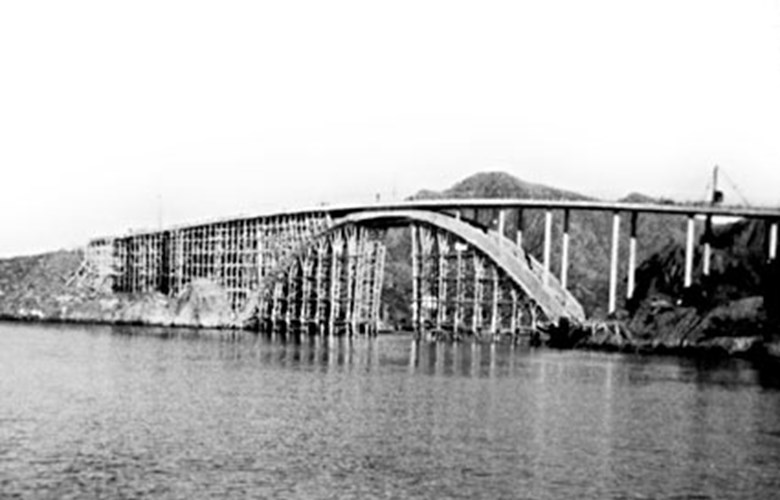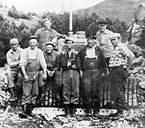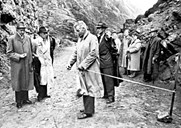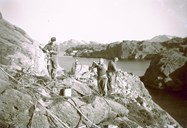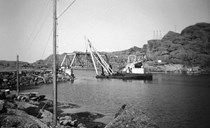"The new riding path"
When the new Solund church was taken into use in 1860, traffic increased in the direction of Hardbakke, where the church stood. Quite a few of the congregation had to walk long distances over rough ground before they reached the farm of Hop, now in a rowboat. From there to Hardbakke, the path went in very rugged terrain. In 1863, the county appropriated funds for this some two-kilometre-long country road, the first of its kind in the coastal municipalities funded by the county. The road, which went from Hop to the steamship quay and general store at Hardbakke, was the only public road in Solund almost until 1940. In the documents it is recorded as a road, and "riding path".
Steep, but romantic as well
This first road in Solund had a standard that produced sweat and tears from those who tried to use it with a wheeled vehicle. Especially in the steep Illekleiva, people needed peace of mind if they wanted to try the horse and cart there. But as a footpath for churchgoers, schoolchildren, and others in reasonable health, the road was good enough. As Hardbakke grew into a municipal centre, the road was more used by people from the eastern and northern parts of the municipality. Much of the road is still there, and many have fond memories of romantic evenings on Hopsvegen.
Work on country road Vaulen - Hardbakke
In the northern Hagefjord, there is often much sea ice in the winter, obstructing traffic. In 1897, the Hagefjord community had built a schoolhouse at Gylta - it is believed that the house had been moved from Gåsvær. A country road project (county road) from Vaulen toward Hardbakke, with a side road to Eide, was initiated in 1937, in order to improve communications in that area. The funding was not generous, so the progress was slow. A part of this road was later merged into the state road system.
It was the truly miserable communications with the outside world that aroused the idea of state road construction across Solund. The mayor from 1948 to 1955, Sverre Takle, made huge efforts both in the planning and the funding of the road plans.
Miserable communications
The turning-point was perhaps when Sverre Takle at the county council meeting in 1948 raised and highlighted the truly miserable communications situation in Solund. After this the municipality had favourable responses from the county chief road official and the county governor. The mayor went to many conferences. The old steamer "Stavenes" went on a tour of inspection around the municipality, with the county governor, the senior officials of Fylkesbaatane (steamship company), and mayor Sverre Takle onboard. On a similar round trip on the "Firda", members of the communications and postal service committee of the Storting (Norwegian Parliament) came along.
The main road was to run from Kolgrov to Krakhella, it was decided. But this was too much for one mouthful. The country road project Gylta - Hardbakke was being funded already. Therefore it was a question now of two projects: Krakhella - Eidevågen and Nåra - Kolgrov.
Kolgrov - Krakhella, 13 years to build
The county governor Nikolai Schei recommended a concentration of the efforts on the Krakhella - Eidevågen project. The funding was quite a puzzle work for him. With the exception of some road work at Hagefjorden in 1950-51, in connection with the building of the electric power line, the road work was started at Eidevågen on 2 November, 1954, with advanced funds, from Fylkesbaatane (steamship company), too.
The municipal election in 1955 resulted in a new community council, with the exception of two re-elected members, and the representation from the western part of the municipality was strong. Sverre Takle was succeeded by Anna Herland as mayor. An attempt to have the project Nåra - Kolgrov built first, was unsuccessful.
In the autumn of 1960, the road Hardbakke - Krakhella was opened. Hardbakke - Ytre Steinsund was handed over to Solund municipality simultaneously with Nåra - Kolgrov, in 1967.


